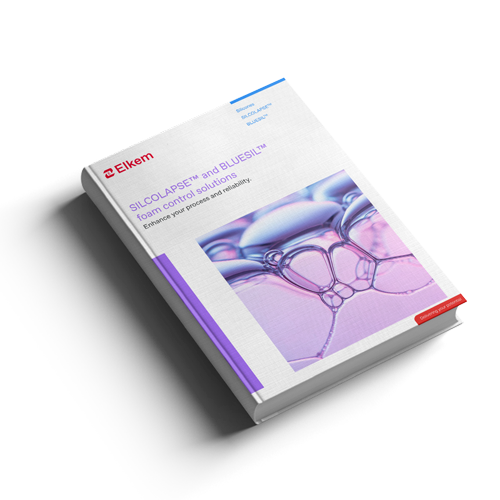- Magazine
- Energy & power
- How antifoam products improve oil well efficiency
How antifoam products improve oil well efficiency
Energy & power
03.11.2021
Throughout each stage of production during oil and gas exploration there are hindrances to efficient extraction. Both upstream and downstream, foam bubbles can slow processes and reduce productivity as well as create safety and environmental hazards.
Foaming occurs when tiny air bubbles collect on the surface of a liquid. The formation of foam bubbles significantly slows down a range of processes which can impact on the efficiency, reliability, and profitability of production.
To combat this, foam bubbles need to be controlled and extracted. To keep plants running as efficiently and effectively as possible, the problem of unwanted foam can be addressed through a variety of specifically designed antifoam agents.
Antifoam solutions for drilling fluid
Drilling fluid formulations can be aqueous or non-aqueous and contain natural or synthetic clay, fillers, lubricant, stabilising, and dispersing agents. These generate entrapped air during manufacturing, pumping and injection. This air, or foam, is detrimental to effective process control and adversely affects the safety and economy of the production process.
Silicone-based foam control is recommended for these drilling applications as its chemical formulation makes it responsive to special conditions such as high or low temperatures and variations in pressure, therefore making it more efficient.
“To combat foam during the drilling application, we propose an antifoam emulsion such as SILCOLAPSE™ 140 or SILCOLAPSE™ C581,” recommends Franck Pochon, Antifoam Technical Service Manager for Europe at Elkem Silicones. SILCOLAPSE™ 140 and SILCOLAPSE™ C581 both offer the advantages of quick defoaming and long duration for prevention, control, and elimination of foam in aqueous media.
“These products are proposed for water-based drilling muds but cover all applications in drilling. For non-aqueous mud we propose BLUESIL™ PDMS products, of different viscosities to satisfy individual technical requirements,” he adds.
Variations in viscosity, temperature, and pressure conditions can greatly impact the drilling and extraction of oil and gas. To counter these changing variables specific foam control agents with unique properties designed for such conditions can be deployed.
New solutions to create better value in operations
Cementation is a key step in oil and gas production that guarantees the successful performance of the oil well, through protecting and sealing the wellbore. Cement formulation requires a specific grade of cement, organic polymers, fillers, and dispersants that improves the cement’s performance.
During the cement mixing and pumping process entrapped air or foam may form, modifying the cement density and consequently affecting rheological characteristics and the mechanical performance of the cement. “If, for instance, the compressive strength of the cement is altered it will impact the robustness and service time of the well, causing a time-consuming safety issue,” Franck Pochon warns.
While emulsions such as SILCOLAPSE™ 140 and SILCOLAPSE™ C581 are suitable for cement slurries, a new addition enlarges the current range with powder technology. “We have recently developed a new antifoam product: SILCOLAPSE™ SP ULTRA 1, a powdered foam control agent which can be used in geographical areas of very high or very low temperatures, allowing for efficient air release,” says Franck Pochon.
A little goes a long way when it comes to the amount of silicone-based foam control agent needed to address a foam issue during cementation. “A very small quantity of our antifoam products can impact largely on the area of concern,” says Christine Leuci. The trend with customers is to create a safer, more efficient working environment, that uses more sustainable products and ultimately creates better value in the operation. Better performances can be achieved through using significantly lower quantities of SILCOLAPSE™ to get the job done.
